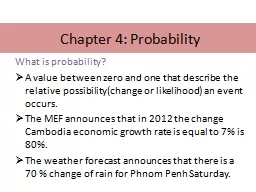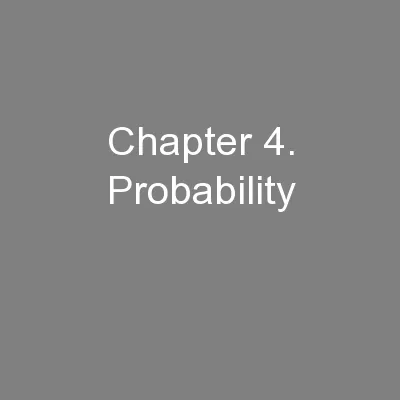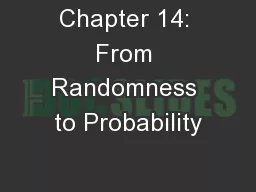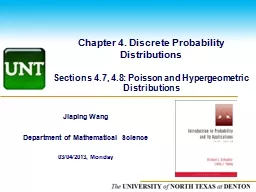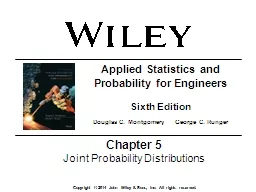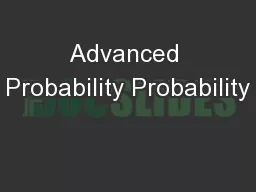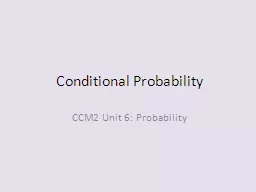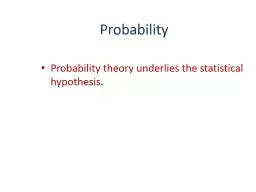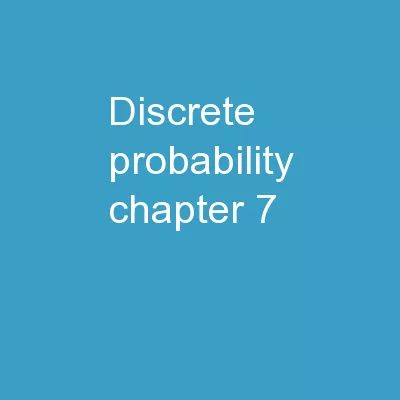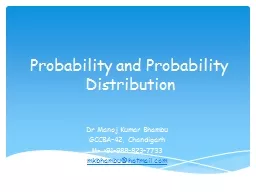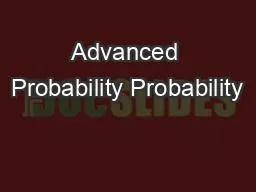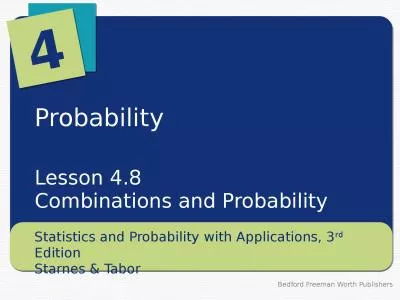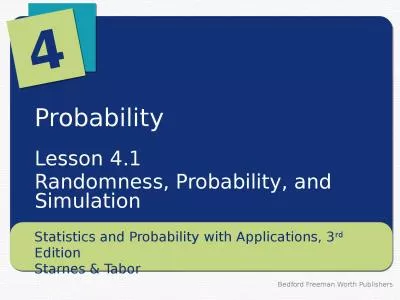PPT-Chapter 4: Probability What is probability?
Author : min-jolicoeur | Published Date : 2019-06-26
A value between zero and one that describe the relative possibilitychange or likelihood an event occurs The MEF announces that in 2012 the change Cambodia economic
Presentation Embed Code
Download Presentation
Download Presentation The PPT/PDF document "Chapter 4: Probability What is probabili..." is the property of its rightful owner. Permission is granted to download and print the materials on this website for personal, non-commercial use only, and to display it on your personal computer provided you do not modify the materials and that you retain all copyright notices contained in the materials. By downloading content from our website, you accept the terms of this agreement.
Chapter 4: Probability What is probability?: Transcript
Download Rules Of Document
"Chapter 4: Probability What is probability?"The content belongs to its owner. You may download and print it for personal use, without modification, and keep all copyright notices. By downloading, you agree to these terms.
Related Documents

